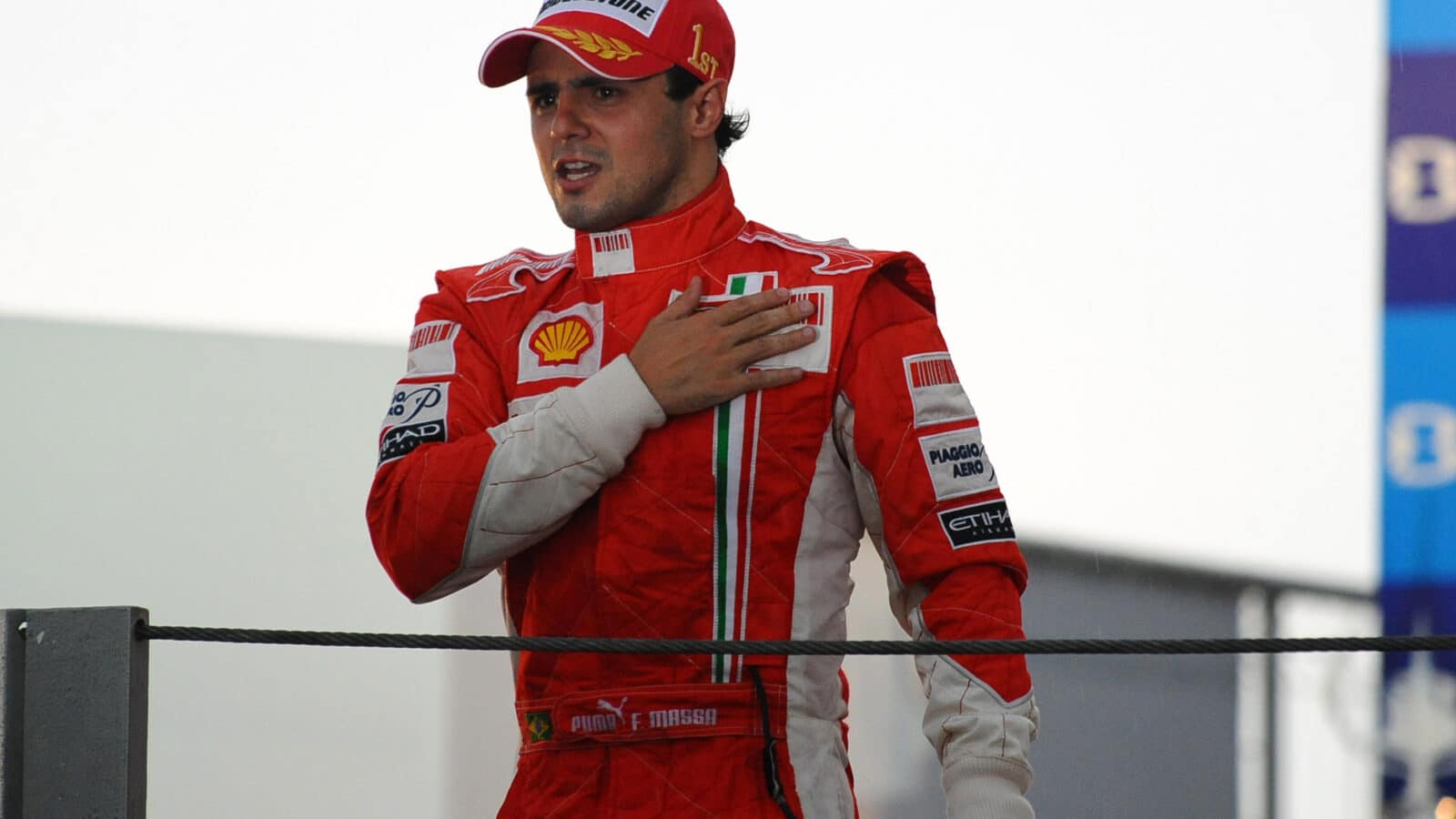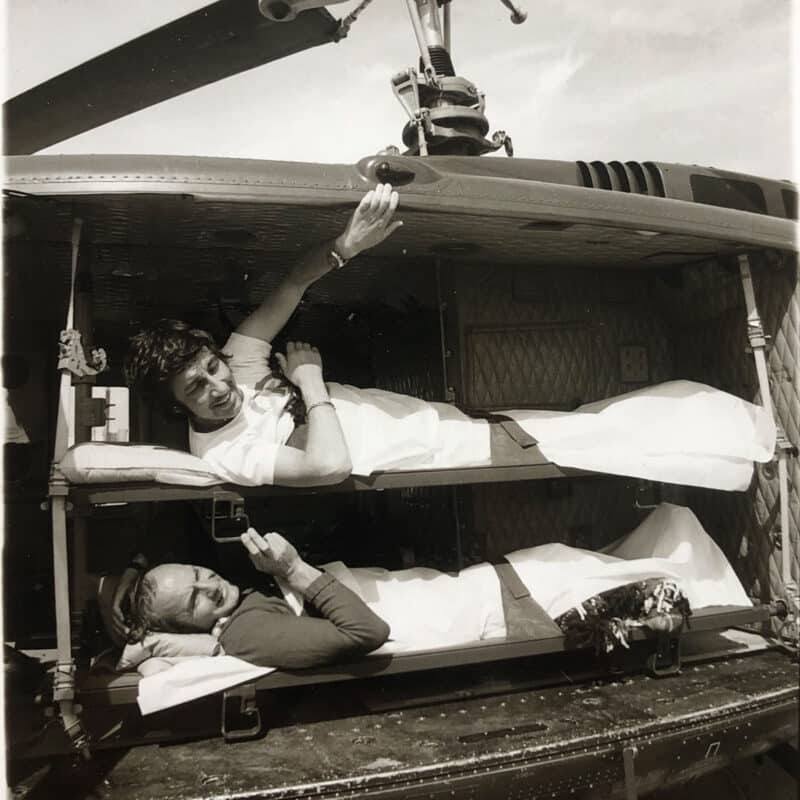Letters - November 2023

Felipe Massa wants to overturn 2008’s Singapore ‘Crashgate’ result, giving him that year’s F1 championship
Star Letter
Can you bring to the attention of resident ‘Mystic Meg’ Johnny Herbert his article in the November 2021 issue [Opinion], where he jokingly predicted a driver suing another driver for losing the world championship. Sadly his joke has become reality.
Roy Chaney, Virginia Water, Surrey
Our featured letter of the month, chosen by the Editor, wins a scalextric Grand Prix race set prize. email your letters to the usual address
I read in the September edition an assertion that the LMP2 class would not feature from 2024 in the 24 Hours of Le Mans [Matters of Moment]. That is incorrect.
Whilst LMP2 leaves the FIA World Endurance Championship after the current season, which will become a two-class championship from 2024, LMP2 will still be added for Le Mans with entries of well into double figures expected.
Those cars are expected to be drawn from 2023 runners in the European Le Mans Series and IMSA WeatherTech SportsCar Championship and from the 2023/2024 Asian Le Mans Series. Le Mans will therefore continue as a three-class race in 2024, with the top-class Hypercars joined by the new-for-2024 LMGT3 class replacing the outgoing LMGTE-Am cars, which are racing for the last time in Europe and the WEC this year.
Graham Goodwin, Epsom
I much enjoyed August’s article on the 1930s proposal for a motor racing circuit near Tring [Britain’s own Green Hell]. It’s intriguing, given that I live barely 20 miles away, and occasionally use the roads that it would have intersected, yet it was something of which I was totally unaware.
Whilst the lie of the land in the area today reflects decades of chalk extraction and subsequent light industry and housing use, the challenge that such a circuit would have presented is clear to see. The drop from the hairpin section cut into the slopes of Pitstone Hill would surely have led to some formidable speeds past the pit area. The climb back up to the Pitstone Hill section looks like it would have been interesting, and might have given today’s ‘Alpine Route’ at Millbrook a run for its money.
That the proposal came to naught is not, perhaps, surprising. The section set into Pitstone Hill would seem to have needed considerable earthworks between its hairpin bends, and be not only visible, but also audible, over a good distance on race days.
As illustrated in the article, a couple of buildings remain, to help ‘place’ the planned circuit. Folly Farm is easily spotted, even if today’s B488 differs slightly from that on your plan. The building of the Silver Birch café also remains; I can remember passing it whilst it was still functioning as a café not so many years ago. Its location is not quite as indicated on your plan however, as it’s nearly half a mile to the north-east, along the B488.
All in all, a fascinating article on what might have been.
Roger Smith, St. Albans
Your reader follow-ups [Letters, October] to Paul Fearnley’s Nürburgring feature article [Ringmasters, September] fail to mention the existing race lap record holder Clay Regazzoni. His race lap of 7min 6.4sec during the 1975 German GP in a Ferrari 312 T still stands. Probably the strain was too much for the engine, as it blew up on the 11th lap.
Patrick Doyle, Hungerford, Berkshire
The article in the October issue, Sleeper Service [Matters of Moment] highlighting the sale of Niki Lauda’s 1984 Mercedes 190E reignited some memories and initiated thoughts about the current state of F1.
Back in ’84 it was a thrilling concept to have Lauda and other grand prix drivers competing against each other in the same machinery. Why not have a Saturday race for the GP pilots in – say – identical Aston Martins or Mercedes sports cars? By having them prepared independently by a third party with no involvement by the teams, it would be a straight race in identical equipment. It would pitch the raw talents of driver against driver without the influence of the technology employed by their teams, devoid of complex aerodynamics or limitation of budget restrictions.
It’s about time the FIA understood what the public wants from competitive motor sport, which it appears no longer to be. Instead of the tedious procession it has become with its ‘Hollywood-isation’ dominated by one team, we would be able to gauge exactly the capabilities and expertise of the ‘world’s best drivers’. If there were points available, the incentive would also be to keep it clean and competitive.
Paul Marsh, Glossop, Derbyshire
Your Arrows story in the October issue [When Arrows got the point] sparked a memory. While working as the sports editor of Motor magazine I persuaded Silverstone to permit a one-lap running race on the Friday evening of the 1987 Grand Prix. The Williams team sponsored it and produced badges. All entry fees went to Save the Children.
The idea proved popular and several hundred people took part. Nigel Mansell waved the starting flag and Arrows driver Eddie Cheever was on the front row of the start line. I went to thank Eddie for coming along and noticed his unusual footwear – battered old moccasins. He’d forgotten to bring his trainers and socks, but assured me he’d be OK. About 25 minutes later I’m chatting with Eddie at the finish line and notice dark red puddles forming around his shoes…

Williams sponsored a running race before the 1987 British Grand Prix – and entered boss Frank
Clearly adrenalin and his competitive spirit overcame the pain barrier.
No doubt the Arrows team were not amused, but somehow on Saturday Eddie qualified 14th of 26 entries for the GP, just behind team-mate Warwick who went on to finish fifth on Sunday.
David Windsor, Goudhurst, Kent
I’m responding to Johnny Herbert’s August column [Opinion] about what’s wrong with Sergio Pérez. I don’t take issue with the success that Red Bull is having in Formula 1, but I do have a problem with the way they treat their drivers.
First Nyck de Vries is brutally sacked mid-season and now they are giving mixed signals about Pérez’s future. It’s been puzzling to have Pérez suddenly lose his mojo, but he’s a proven race winner and an underrated driver. It seems the car upgrades better suit Max’s style or maybe Pérez is not getting the same equipment, which is nothing new in F1. But even in the cut-throat world of F1, people typically perform better in a supportive environment.
The biggest issue for me is the lack of leadership from the senior Red Bull principals. I am a fan of Christian Horner and would think he’d know better. On the other hand, Helmut Marko comes across as a man with a chip on his shoulder. Instead of nurturing their drivers they are quick to shed them, especially with their ‘second’ team. They have seen a parade of young drivers come and go. With the exception of Vettel, this second team has not accomplished much of note in F1. Their young driver programme has, for the most part, been a dead end for many aspiring young drivers. A possible option for them would be to sell the second team to another group, like Andretti, who could take a different approach and add more value to the grid.
Steve Angell, Glenview, Illinois, US
What a wonderful and informative read your October issue article on Howden Ganley was [The Motor Sport Interview]. It enlightened me on his journey. The emotions of climbing the ladder with the best of the best including the highs and lows, marked by the tragic and emotional loss of Bruce McLaren.

Howden Ganley, upper, and Mike Hailwood about to be airlifted to hospital – via the Nürburgring in 1974
We know this was an incredibly exciting and dangerous period for the development of F1 but it was good to be reminded of the determination, talent and passion that came from as far away as New Zealand and the influence this has had on the sport. This should be remembered.
Jeremy Samengo-Turner, Froxfield, Hants
I have just read the Howden Ganley interview. I always felt that he was a no-nonsense, hard-working guy who contributed a lot more to the sport than many more successful drivers. I attach a photo of that scene the day after the German GP 1974, when Ganley and Mike Hailwood were airlifted in a Bundeswehr helicopter, above, just as Ganley described it.
Gregor Messer, Cologne, Germany
Excellent latest issue, team [October]. With Liam Lawson, another Kiwi, flying high in F1, if only temporarily, the profile of Howden Ganley was timely. As well as McLaren’s 60th, of course. I grew up in the ’60s and early ’70s watching the cream of F1 competing in the Tasman series.
I also enjoyed the stories about Norris, Russell and Albon [The likely lads] and the profile of the Mallocks [Under the radar].
Graeme Simpson, Rotorua, New Zealand
Regarding your editorial about battery fires in the WRX [The Editor, October], here are some things you may not be aware of. I’ve been working with a company that supplies nickel metal hydride batteries to the military. When they tested one by machine gunning it, it did not catch fire. The problem we have is that lithium ion gives more bang for the buck. Everyone has gone down that route with the potential for a Lydden Hill outcome.
Lithium-ion fires are chemical; they need heat and fuel (the battery) but they don’t need oxygen and the only way to put them out is by reducing the temperature with gallons of water, whilst making sure the marshals at an event have full breathing apparatus as the smoke is potentially carcinogenic.
Of course electric cars are not very green; the lithium is extracted at huge environmental cost, while no one seems to know what to do with the spent batteries (or cars because when your Tesla needs a new battery, the cost is much greater than the value of the car).
One solution could be carbon/hydrogen fuels. I believe F1 will be using such fuel shortly, the RAF as well. Apparently there are no engine mods required (although I might try it in a Suffolk Punch before a TVR!).
Jasper Gilder, Hemel Hempstead
Contact us
Write to Motor Sport, 18-20 Rosemont Road, London, NW3 6NE
e-mail, [email protected]

